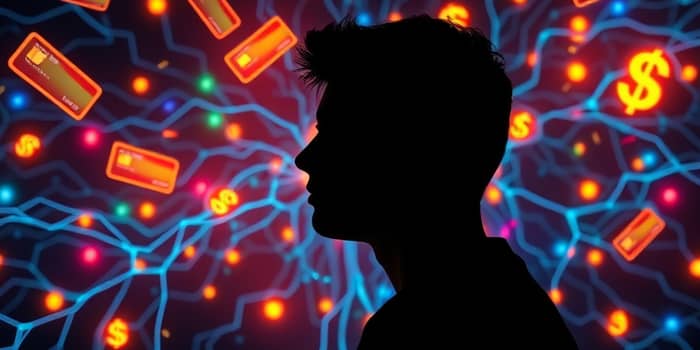Over the past few decades, consumer habits have undergone a remarkable transformation. Cash, once the undisputed medium of exchange, has ceded ground to credit cards, debit cards, and contactless digital wallets. This shift has not only revolutionized transaction convenience but has also introduced profound psychological changes in how we perceive and manage money. With each swipe or tap, consumers often overlook the immediate cost of purchases, unwittingly setting the stage for increased spending, impulse buying, and mounting debt. Understanding these hidden mechanisms is the first step toward regaining control over personal finances.
Neural Mechanisms: How Cards Activate Reward Pathways
Neurological research has illuminated the ways in which using cards stimulates the brain’s reward centers. In multiple experiments, fMRI studies show powerful activation in the striatum—the same dopaminergic network linked to addiction—when participants handled credit card images or made purchases with plastic. This activation parallels responses to high-reward stimuli such as gambling cues, suggesting that cardholders experience an immediate anticipation of pleasure at the point of sale.
Interestingly, the intensity of this neural response did not correlate with the price of the item, indicating that the mere act of swiping triggers reinforcement. In laboratory settings, subjects spent an average of $87.41 using credit cards compared to $84.19 with cash, despite identical shopping environments. The neural pull toward card-based transactions underscores why consumers frequently justify or overlook rising balances on their statements.
The "Pain of Payment" Concept
The term “pain of paying” describes the unpleasant sensation associated with parting from tangible money. Neuroscientists have identified the insular cortex as the region that processes this sting, effectively serving as a psychological brake on frivolous purchases. Physical cash transactions make the loss palpable, prompting buyers to reflect before completing a sale. By contrast, cards anesthetize the pain of paying, allowing for swift and emotionless transactions.
Far from being an illusion, this decoupling has measurable consequences. The cost of items vanishes temporarily into a digital ledger, postponing financial reckoning until bill time. Consequently, consumers are more likely to exceed budgets and ignore mounting debt until statements arrive weeks later. This delayed feedback loop erodes financial vigilance and fosters a cycle of unchecked spending.
Instant Gratification and Impulse Buying
One of the most potent drivers of modern consumerism is the allure of instant gratification fueling impulse buys. Credit cards and mobile wallets offer immediate access to products, services, and experiences with minimal friction. The ability to acquire items on demand satisfies an innate craving for speed and convenience, often at the expense of long-term financial well-being.
Research indicates that shoppers using cards are significantly more prone to impulse purchases, particularly for luxury or non-essential goods. Even restaurant tipping behavior shifts: patrons leave approximately 4.3% higher tips when paying by card than by cash. This elevated spending extends beyond small comforts to major discretionary expenses, amplifying debt risks for unprepared consumers.
Emotional and Social Influences
Emotions play a critical role in spending decisions. Whether triggered by stress, excitement, or boredom, consumers frequently turn to retail therapy to regulate mood. In these moments, plastic money provides an effortless escape without the instant sting of cash.
Beyond internal drives, external social pressures magnify card-related spending. The gamification of points and rewards programs taps into our desire for achievements and status, encouraging frequent purchases. Simultaneously, social media amplifies envy and comparison, fueling Fear of Missing Out (FOMO) on trends and experiences. These combined forces push individuals toward purchases they might otherwise reconsider.
Cognitive Biases and Perception
Our brains rely on shortcuts and biases when making complex decisions, including spending. One such shortcut is payment coupling: the psychological distance created by a time delay between purchase and billing. This time lag blurs spending reality, framing expenses as belonging to “future me,” who will handle them with less emotional weight.
Another bias, the compromise effect, describes how people gravitate toward mid-range options when evaluating alternatives. However, when paying with cards, this tendency weakens. Consumers are more willing to choose higher-priced or riskier products, interpreting them as sufficiently justified by rewards or convenience features.
Denial, Awareness, and Habit Formation
Repeated behaviors strengthen neural pathways, turning occasional indulgences into entrenched habits. With credit cards, the lack of immediate loss conditions the brain to expect rewards with little pain, reinforcing a cycle of regular overspending. Over time, this can evolve into unhealthy financial patterns or shopping addictions, especially among vulnerable individuals.
Meanwhile, the human mind is adept at denial. Cardholders often underestimate total debt, convinced they will catch up later. This mindset undermines budgeting efforts and encourages further detachment from the consequences of spending, perpetuating a dangerous loop of wishful thinking and financial neglect.
Behavioral and Demographic Variations
Not all consumers are equally susceptible to card-induced spending biases. Research highlights that young adults, particularly those with high impulsivity or addictive tendencies, face a greater risk of debt accumulation. Personality traits such as sensation-seeking also correlate with more frequent credit card use and higher balances.
Other demographic factors influence vulnerability:
- Younger age groups (18–34) exhibit higher average credit utilization rates.
- Individuals with lower financial literacy miss early warning signs of debt growth.
- Certain personality profiles, like high extraversion, link to more extravagant card spending.
Recognizing these variations is crucial for tailoring interventions and educational programs to the needs of specific audiences.
Broader Consequences and Societal Trends
At the macro level, the global rise of card and digital payments parallels escalating household debt. National statistics reveal that as contactless and mobile transactions surge, average credit card balances climb accordingly. While convenient, this trend raises concerns about consumer resilience and economic stability.
Not all digital payments carry identical psychological impacts. The tactile feedback of a magnetic stripe, the audible click of a chip reader, or the subtle vibration of a smartphone app can differ in how they register with the brain. Some innovators are exploring customizable transaction alerts and haptic cues to reintroduce aspects of the “pain of paying” into digital contexts.
Potential Solutions, Mitigation, and Financial Literacy
Though the psychological pull of cards is strong, consumers can adopt strategies to counteract overspending:
- Set real-time spending notifications on all card transactions.
- Use cash envelopes or prepaid cards for discretionary spending categories.
- Maintain a simple budget spreadsheet or mobile app to track daily outflows.
- Enroll in financial literacy courses focused on behavioral economics.
By combining technological tools with self-discipline and awareness, individuals can reestablish the necessary friction that curbs excessive spending and builds healthier money habits.
Key Numbers and Data Points
Below is a brief summary of critical metrics illustrating the differences in consumer behavior based on payment methods:
These figures underscore how slight behavioral shifts can aggregate into significant financial outcomes over time.
Understanding the interplay of neural, psychological, and social forces that drive card-based spending is essential for anyone seeking to master their finances. By acknowledging and addressing these hidden triggers, consumers can reclaim control, reduce unnecessary expenses, and build a sustainable pathway toward their financial goals.
References
- https://mitsloan.mit.edu/experts/how-credit-cards-activate-reward-center-our-brains-and-drive-spending
- https://betterworld.mit.edu/spectrum/issues/winter-1999/the-psychology-of-spending/
- https://www.bankrate.com/credit-cards/advice/psychology-of-credit-card-spending/
- https://news.nd.edu/news/cash-or-card-consumers-pay-strategically-to-forget-guilty-purchases-study-shows/
- https://www.cmu.edu/homepage/practical/2007/winter/spending-til-it-hurts.shtml
- https://pmc.ncbi.nlm.nih.gov/articles/PMC11939284/
- https://www.nature.com/articles/s41598-021-83488-3
- https://www.moneyfit.org/psychology-of-credit-card-debt/
- https://www.nerdwallet.com/credit-cards/learn/credit-cards-make-you-spend-more
- https://www.frontiersin.org/journals/psychology/articles/10.3389/fpsyg.2025.1517460/full
- https://pmc.ncbi.nlm.nih.gov/articles/PMC12174854/










